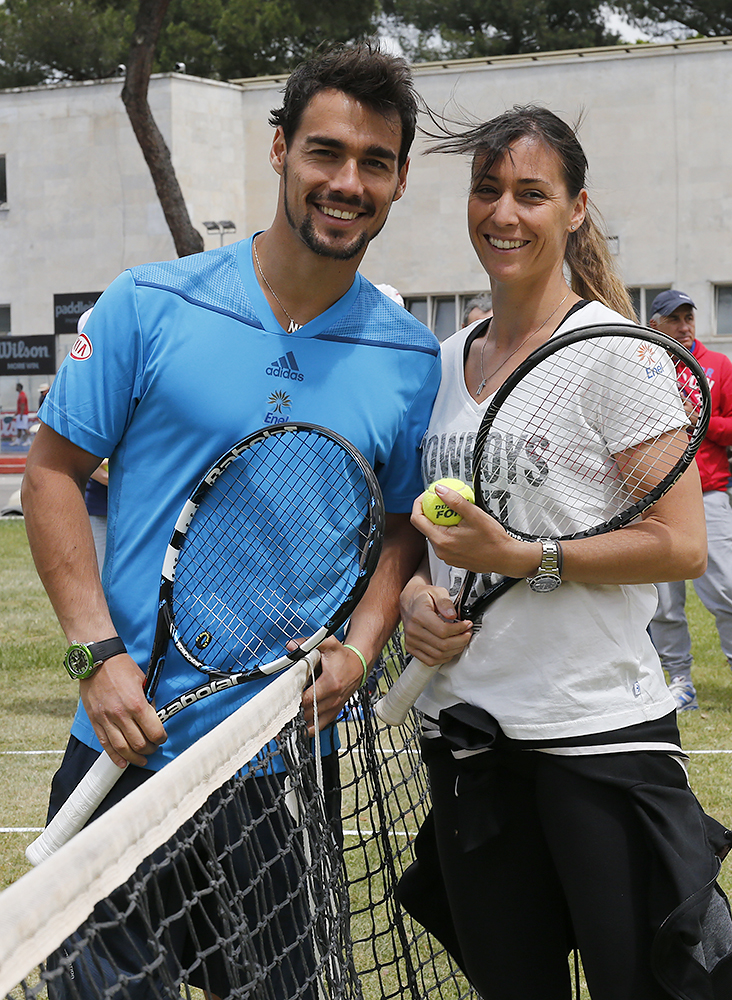It isn’t often that a lowly journalist like myself scoops the New York Times, but it happened: On June 4, 2021, covering the famous French Open Tennis Tournament in Paris, New York Times sports correspondent Matthew Futterman filed a story noting something strange in the world of that sport – namely, the sudden emergence of Italy as a super-power on the courts. Specifically, Futterman noted the ever-increasing number of ridiculously talented Italian male players in the Top 100, the most of any country.
But six months earlier, when the pandemic forced me to watch the Tennis Channel (a sport I had sporadically played and enjoyed until my mid-30s, when work concerns put it on the back-burner), I noticed the same thing and mentioned it to family and friends.
I’m not looking for a Pulitzer Prize, and certainly tennis isn’t the popular media draw that it was back in the 1980s and ’90s. But, it did feel good to know that I spotted a trend before any major newspaper did.
Before I tossed my racquet into the air and declared victory, however, my inner-critic wondered if I found this trend first only because italianitá is my official beat. Why did it take the sports world a full six months to recognize this amazing story? Is it possible, my inner-critic also wondered, that, as with everything else, Italians are often ignored or dismissed by others regardless of the context, even in sports? It isn’t until Italian talent becomes so ubiquitous that the mainstream media finally seems to sit up and take notice. Luckily, Mr. Futterman did.
The last Italian male player to win a major tennis tournament was Adriano Panatta, who won the French Open in 1976. At the time, Jimmy Carter was president. Since then? One long drought. But, as Futterman notes, the panoply of gifted Italian tennis players in 2021 more than makes up for it.

Before mentioning the men, one has to give a shout-out to the Italian women. From the early 2000s until fairly recently, they filled that tennis drought by producing major champions like Francesca Schiavone (French Open, 2010) and Flavia Pennetta (U.S. Open, 2015). Right after her U.S. Open win, Pennetta announced her retirement; she wanted to start a family. And whom did she marry? Fellow tennis player Fabio Fognini, who is now (at age 34) the “old man” of Italian mens’ tennis, someone who still juggles his own career while offering advice to the younger players in the Italian contingent.
The most exciting players are two 19 year-olds, both former junior champions: Lorenzo Musetti (from Carrara) and Jannik Sinner (from Alto Adige; he speaks both German and Italian). Novak Djokovic, the world’s #1 player, was so impressed by watching a teen-age Sinner play that he told people: “Keep an eye on this kid.” Djokovic’s prediction is coming true. And although he only recently started playing in professional tournaments, Musetti’s energy and skill-set has already inspired a new term: Musetti Magic. One commentator even called his playing style “operatic.”
If Musetti and Sinner are the future, Italy already has a player in the present: Matteo Berrettini (Rome), currently ranked #8 in the world. Unusually tall for an Italian at 6’5,” Berrettini recently charmed the crowds at the 2021 Madrid Open by delivering remarks in Spanish after his second-place finish.
In addition to older players like Fognini (San Remo), Simone Bolelli (Bologna, 35 years old), and Andreas Seppi (Alto Adige, 37 years old), other Italian players have been popping in-and-out of tournaments as well, impressing viewers with their athleticism.
These include Lorenzo Sonego (Torino, a dead-ringer for Ralph Macchio in The Karate Kid, right down to his headband); Salvatore Caruso (Sicily); Marco Cecchinato (Sicily); Stefano Trevaglia (Ascoli Piceno); and Gianluca Mager (San Remo).
So what’s the secret? Futterman credits the Italian Tennis Federation in Italy with holding more lower-level tournaments over the past decade, which allows for more playing. An article in Tennis Magazine by Steve Tignor (June 7th, 2021) credits tennis organizer Michelangelo Dell’Edera, with his emphasis on both data and performance analysis.
But the reason for this blossoming in Italian mens’ tennis may be very simple: In the same Tennis Magazine article, Craig O’Shannessy, a tennis consultant, attributes this success to a sense of “camaraderie,” adding, “No jealousy or back-biting. Everyone wears the same clothes, and they all feel that they’re part of the same team.” Many of the players have also shared the same coaches, adding to the sense of family.
In short, like their classical Roman ancestors, today’s tennis warriors show what the Italic people can do if they truly work together. -BDC
[Photo: Internazionali BNL d’Italia]




Recent Comments